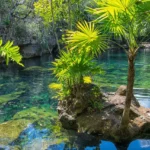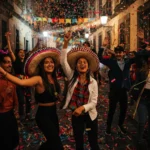Iguazu Falls overview
Iguazu Falls, one of the most spectacular natural wonders of the world, lies on the border between Argentina and Brazil. This UNESCO World Heritage Site, famed for its breathtaking beauty and raw power, is a must-visit destination for nature lovers and adventurers alike. The falls are part of a larger complex of protected areas that include the Iguazú National Park in Argentina and the Iguaçu National Park in Brazil. These parks are home to a rich biodiversity, including many rare and endangered species. This guide offers an in-depth exploration of Iguazu Falls, covering everything from preparation to the best times to visit, ensuring a memorable and well-planned journey.
Preparing for the Visit
Passport and Visas
Travelers must ensure their passports are valid for at least six months beyond their planned departure. Visa requirements vary depending on nationality. Visitors from many countries can enter Argentina and Brazil without a visa for short stays. However, it’s crucial to check the latest visa requirements for both countries before traveling.
Vaccinations and Health Precautions
Certain vaccinations may be recommended or required for travel to the Iguazu Falls region. These can include yellow fever, typhoid, and hepatitis A and B. It’s advisable to consult a travel health clinic or doctor well in advance of your trip. Additionally, travelers should consider travel insurance that covers medical emergencies.
Currency and Budgeting
Both Argentine Pesos and Brazilian Reais are used on respective sides of the falls. It’s a good practice to carry some cash, as not all places accept credit cards. Budgeting for the trip depends on various factors, including the type of accommodation, dining preferences, and activities planned. Generally, the cost of living is lower in South America compared to North America and Western Europe, but tourist areas like Iguazu can be more expensive.
Clothing and Gear
The weather in the Iguazu region is typically subtropical, meaning it can be hot and humid with frequent rain showers. Light, breathable clothing is recommended, along with a waterproof jacket or poncho. Comfortable, water-resistant walking shoes are essential for exploring the trails around the falls. Insect repellent and sun protection are also important.
Exploring the Falls

The Argentina Side: Parque Nacional Iguazú
The Argentine side of the falls is known for its close-up views and extensive trail system. The Devil’s Throat, a U-shaped chasm with the largest flow of water, is the highlight. Visitors can explore the Upper and Lower Circuits, each offering unique vantage points. Boat trips that take visitors close to the falls’ base are popular for those seeking an adrenaline rush.
The Brazil Side: Parque Nacional do Iguaçu
The Brazilian side offers panoramic views of the falls, providing a sense of their immense scale. Helicopter tours are available for an aerial perspective. The Parque das Aves, a bird park near the falls, is home to various native bird species, offering a tranquil contrast to the power of the falls.
Border Crossing Considerations
For those wishing to experience both sides of the falls, it’s essential to understand the border crossing procedures. This includes immigration controls and any visa requirements. Travelers should carry their passports and any necessary visas when crossing the border.
Other Tips for Visitors

Staying Hydrated and Safe
The tropical climate can be dehydrating, especially during hikes. Carrying water and staying hydrated is crucial. Visitors should also be mindful of their physical limits and safety on the trails.
Photography and Electronics
The mist from the falls can damage electronics. Waterproof covers for cameras and phones are recommended. Despite the challenges, the falls present countless stunning photo opportunities.
Local Cuisine and Culture
The areas around the falls offer a mix of Argentine and Brazilian cuisines. Trying local dishes and experiencing the culture adds to the richness of the visit.
Environmental Responsibility
As part of a protected area, visitors are urged to respect the environment. This includes staying on marked trails, not feeding wildlife, and disposing of trash properly.
Best Time to Visit
Seasonal Considerations
The falls are a year-round destination, but the experience varies by season. The rainy season (December to March) sees the falls at their most powerful, while the drier season (April to November) offers clearer trails and less mist.
Accommodations
Options for Every Budget
Both sides of the falls offer a range of accommodations, from budget hostels to luxury resorts. Advance booking is recommended, especially during peak tourist seasons.
FAQs
- Do I need a visa to visit both sides of the falls?
- Visa requirements depend on your nationality. Check the latest requirements for Argentina and Brazil before your trip.
- Can I cross the border between Argentina and Brazil at the falls?
- Yes, but ensure you have the necessary documentation and understand the immigration procedures.
- What is the best way to see the falls?
- Both the Argentine and Brazilian sides offer unique perspectives. If possible, visit both sides for a comprehensive experience.
- Is it safe to travel to Iguazu Falls?
- Yes, the areas around Iguazu Falls are generally safe for tourists. Standard travel precautions should be observed.
- What should I pack for a trip to Iguazu Falls?
- Pack light, breathable clothing, waterproof gear, comfortable walking shoes, insect repellent, sun protection, and a camera with a waterproof cover.











